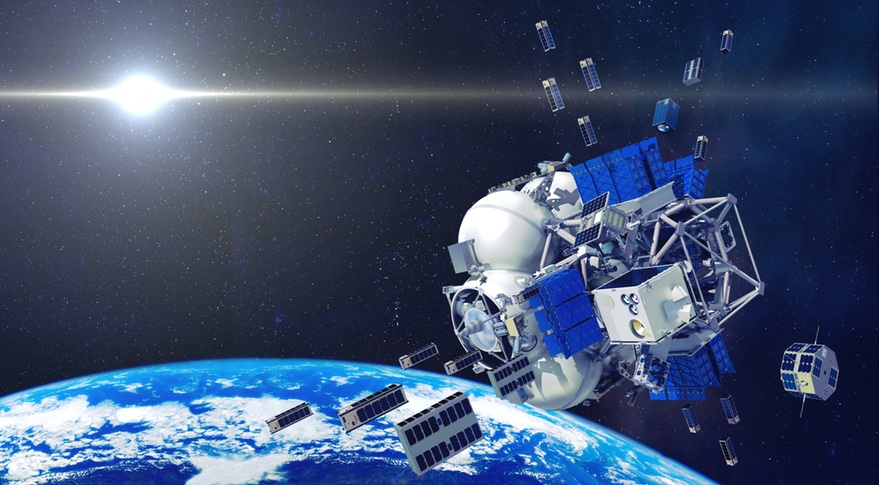
Biggest satellite industry fails of 2017
Nobody said launching a satellite is easy. After all, it does require rocket science. But this year is far from over and we have already seen quite a few setbacks for some of the biggest names in the space industry. Take a look…

European Space Agency
What happened: Clocks on several Galileo satellites failed
The year began on a pretty ominous note when the European Space Agency (ESA) declared in January that the atomic clocks on a number of satellites in the Galileo satnav constellation had failed. Out of the 72 clocks launched till date, nine had become flawed. Though ESA didn’t declare any of the satellites as completely nonfunctional because of this glitch, Director General Jan Woerne acknowledged that more failing clocks meant reduced capability of Galileo and that was a serious issue. “If this failure has some systematic reason we have to be careful,” he told reporters in Paris.
The Galileo satnav system has already seen many setbacks, including the budget spiraling three times the original estimate in the last 17 years that it has taken to develop.

Japan Aerospace Exploration Agency
What happened: Japan’s smallest-ever rocket launch was a disaster
Also in January, Japan’s mini-rocket technology efforts ended up in deep water when the 32-feet rocket carrying a payload of 3 kg fell into the sea. According to the Japan Aerospace Exploration Agency, after the rocket launched, the communication systems malfunctioned and ignition of the second booster terminated. Several Japanese firms were backing this project as they sought cheaper and easier options to put a satellite into space.
“This is still a small step and we expect more impediments, but once the launch succeeds, we see a potential for making the rocket launch cheaper and shorter in project time,” the space agency’s public relations officer Takayuki Tomobe explained.

China Aerospace Science and Technology Corporation
What happened: China’s most powerful rocket failed
On July 2, China’s premier heavy-lift rocket, Long March 5, attempted to launch an experimental communications satellite into space, but couldn’t. The initial ascent seemed fine. But after the rocket had shed its boosters, there appeared to be an unplanned delay in the core stage separation. With the second stage’s burn not meeting predictions, the rocket began to lose altitude.
Even as official news agency Xinhua confirmed that “an anomaly occurred during the flight of the rocket,” the failure spelled a big setback for the country’s spaceflight program… Because only a month before, Long March 3B had sent a satellite into the wrong orbit after an unsuccessful launch. Having two back-to-back failures certainly didn’t look good for China Aerospace Science and Technology Corporation.

Indian Space Research Organization
What happened: Satellite couldn’t leave its launcher after liftoff
For the first time in two decades, Indian Space Research Organization’s trusted Polar Satellite Launch Vehicle (PSLV) failed to complete a mission successfully when the satellite it was carrying remained glued to its launcher on August 31. While an investigation is underway to deduce the exact reasons for the failure, the glitch apparently came from the heat shield. ISRO announced that even though the holding apparatus inside the rocket had unclasped, the satellite couldn’t get out because the heat shield simply didn’t open.
It’s interesting to note that the satellite PSLV was carrying, IRNSS-1H, was itself supposed to replace another satellite in India’s regional navigation constellation (IRNSS-1A) after an atomic clock on the latter failed completely last year, rendering its ability to transmit positioning data to the ground useless.
And now we come to the swarm of private organizations and academic institutions whose satellites simply refused to work… all in one launch

Astro Digital
What happened: 2 satellites launched in July became unresponsive
Not too long ago, we wrote about the new kid on the satellite industry block, Astro Digital and its plan to put the entire system of earth observation on steroids. The startup aims to do everything from offering its own imagery to providing ultra-fast, on-demand data processing. And to this end, it launched Landmapper-BC1 and Landmapper-BC2 satellites on July 14.
By September 9, the company was forced to declare both the satellites as ‘officially unresponsive’. This announcement came after 6 weeks of failed attempts to resuscitate the birds whose ability to transmit data back to earth had been compromised ever since their deployment. Astro Digital suspects launch anomalies that could have led to conditions extreme enough to fry the key electronics on the spacecraft. The launch was carried out by a Russian Soyuz rocket, which brings us to the next entry on this list…
Dauria Aerospace, Moscow Aviation Institute, Moscow State University, GeoOptics, and UTE-UESOR
What happened: 8 out of 9 cubesats deployed failed to function
In total, the July 14 Soyuz mission carried 73 satellites into orbit. Soon, we learned that at least eight of the nine satellites sent by the above-mentioned organizations had stopped responding to the operator’s commands. The company that provided the launch services, Glavkosmos, was quick to blame the developers for this failure, stating that there was no evidence to support the rocket was responsible for the misadventure.
“It’s their first experience in cubesat development,” Launch Program Director Vsevolod Kryukovskiy said. “It could be something on the development side, or with components or ground stations.” But, once he was pointed to the issues with the established players in the small satellite industry, Kryukovskiy had to admit his failings. Read about them below…
Planet and Spire
What happened: One cubesat each faced an issue with the Soyuz launch
Soyuz carried 48 Doves for Planet and 8 Lemur satellites for Spire on its July 14 mission. While Planet was unable to establish contact with one of the Doves, the Soyuz accidentally released one of Spire’s satellites into the wrong orbit. Both companies decided not to make any noise about this matter.
Meanwhile, launch director Kryukovskiy has assured that the technical team is examining the final mission telemetry, and the report should be ready soon.






